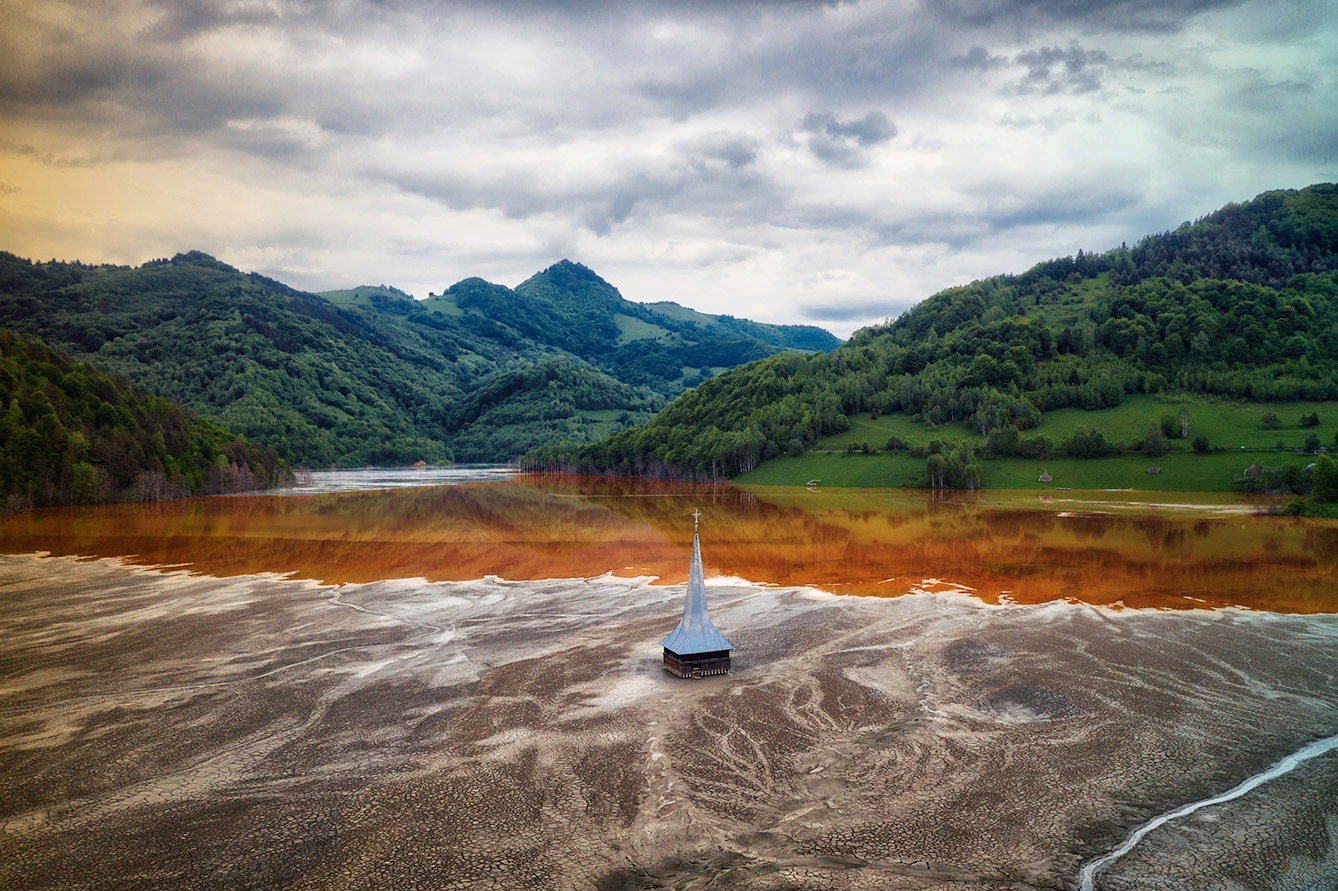Romania is known for being picturesque and splendid. The high hills herald the earth’s greatness, and the low valleys provide great company for the clandestine traveler. Nature surprises you at every corner with its beauty, and sudden, pleasant encounters with wildlife are not out of the ordinary. This is what one would typically expect to see in the Romanian countryside.
Geamăna: a village that turned into a lake
Not in Geamăna, however. This tiny village in the valley was basically wiped off the face of the earth nearly 45 years ago. To this day, nothing but toxic water and mud cover what used to be a happy, lively little village in the Romanian valley.
1978 was the year when the lives of over 1000 people were to be forever changed. Lured away by the promises of great riches and land, the families of Geamăna were, one by one escorted – or more like kicked out – from their homeland.
The few kilometers that were initially announced to represent the distance from the village to the mine turned into hundreds. People were forced to leave their belongings and homes, as well as their whole lives in the village of Geamăna, the sinking village. All for the sake of what was to be, at that time, Europe’s largest copper mine.


Rosia Poieni is a copper surface mine. It has the largest copper and gold deposit in Romania, its reserves representing 65% of the total amount of copper in the country. It’s no wonder that Romanian communist leader Nicolae Ceausescu was so eager to exploit the mine. So eager that he would wipe out an entire village and displace over 400 families out of their homes.
The villagers never saw the promised money, or if they did, it was nowhere remotely near pledged sum. And out of the over one thousand souls who used to call Geamăna home, only about 20 still reside in the valley, looking over the village-turned-lake, now a decantation space for residual waste from the Roșia Poieni mine.
No longer a village, but a toxic pit
Each year, the sludge-covered lake grows by approximately one meter. Hundreds of households, next to schools and, gardens, even cemeteries, are now covered in toxic waste. From the lowest pits to the highest peaks, infested water floods the beautiful village of Geamăna. Tainted red and blue water floats over the roofs of the houses, over the tallest trees, and over the memory of what Geamăna was and will never be again.
Peaking out of mud and ooze, barely making it out, stands the top of what used to be a place of gathering – the local church. One day, this might be gone too. But for today, this peak is the only proof that, under the tons of waste and residue and the toxic mud, there used to be a beautiful village called Geamăna, which translates to twin. Quite contrary to its name, there is no other Geamăna, and neither should there ever be one – a similar story to that of this land is something our humankind cannot witness. Not again.







